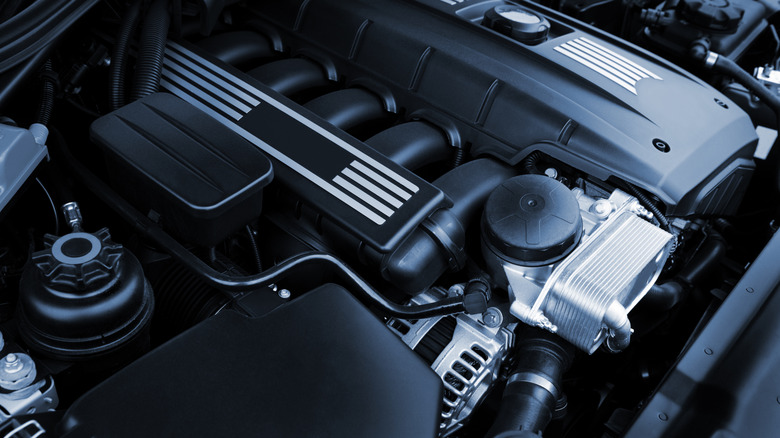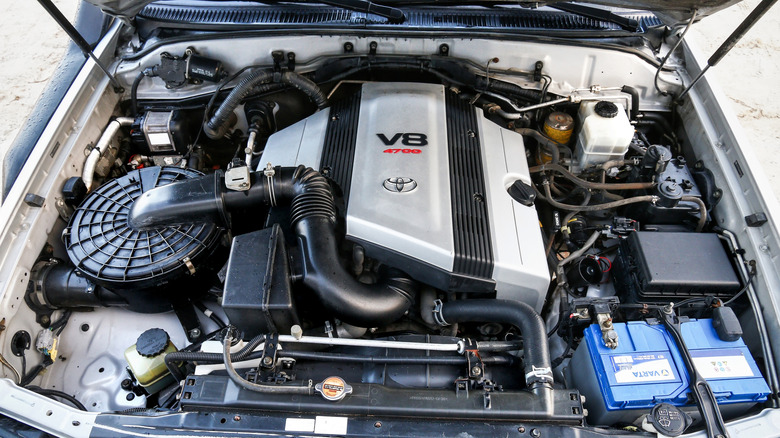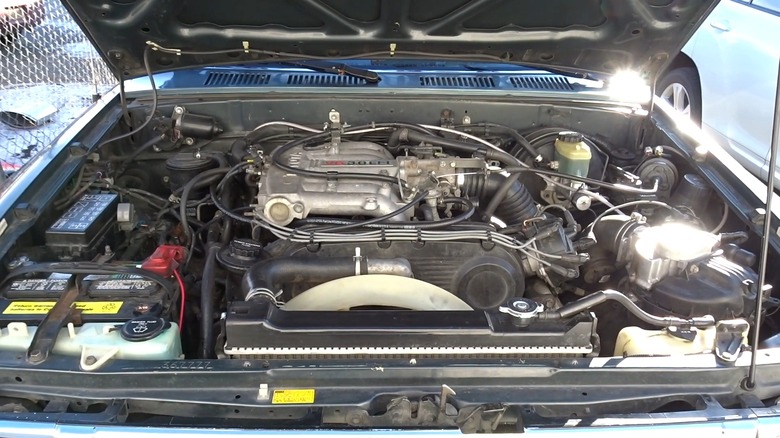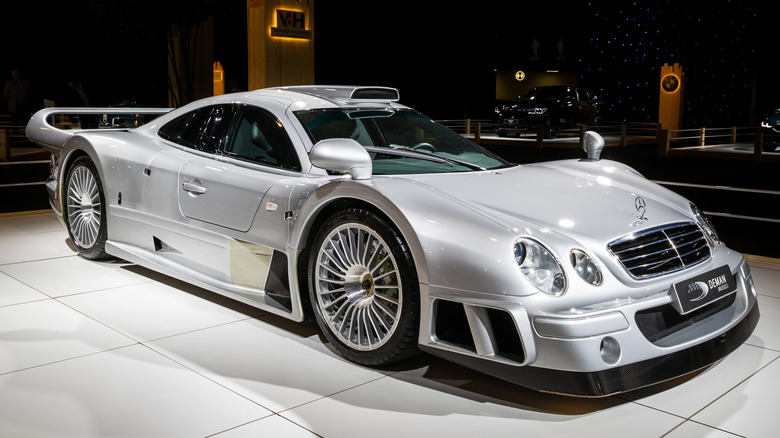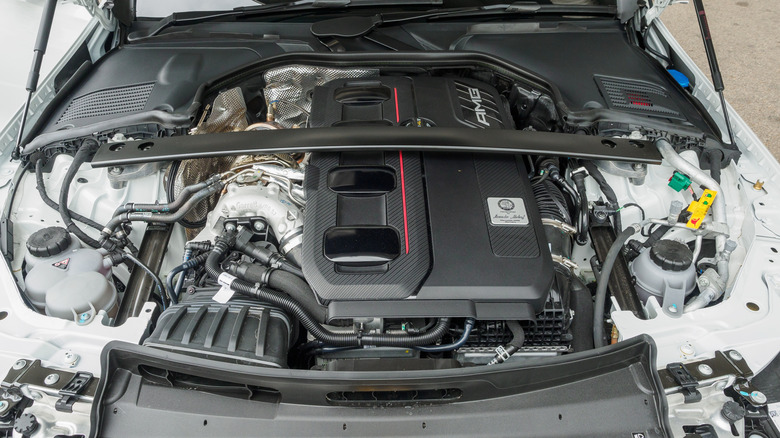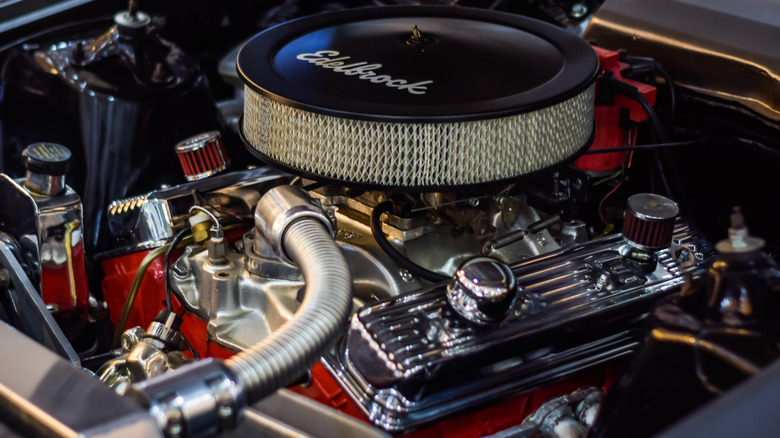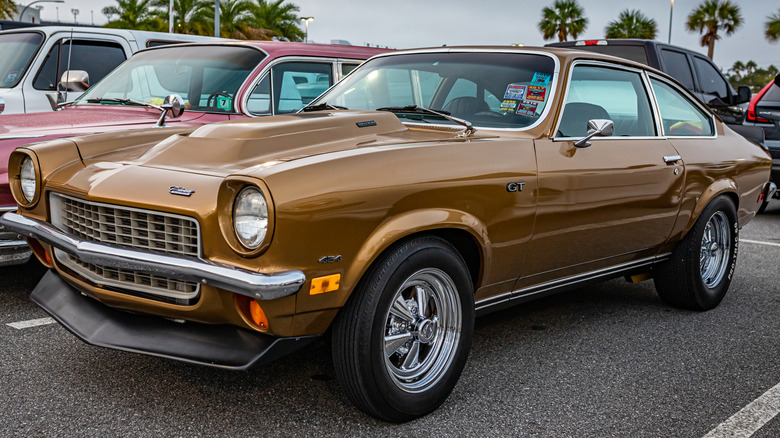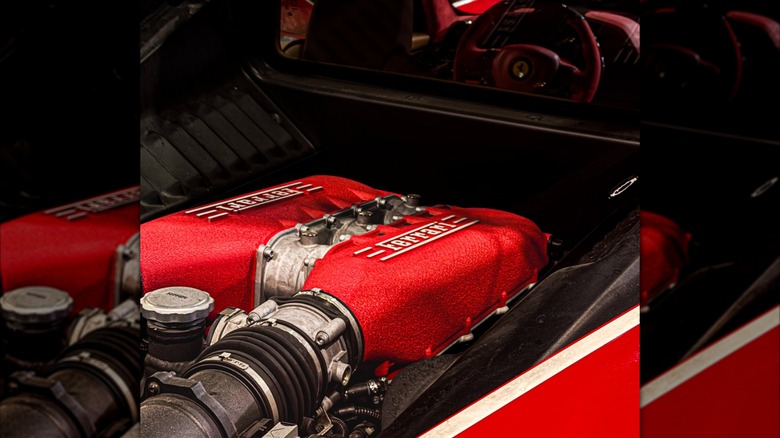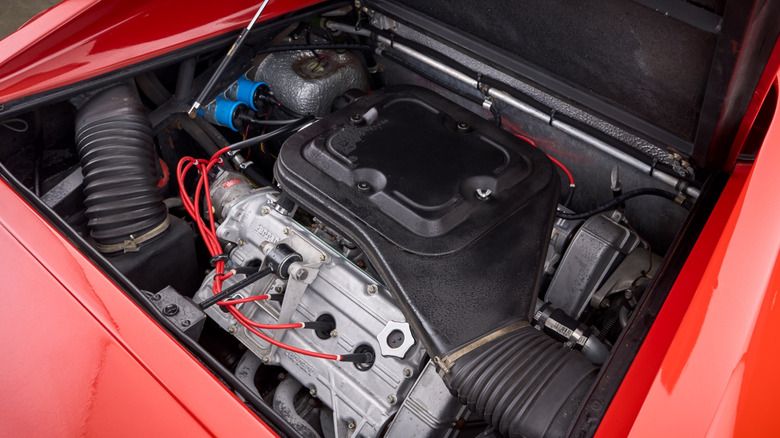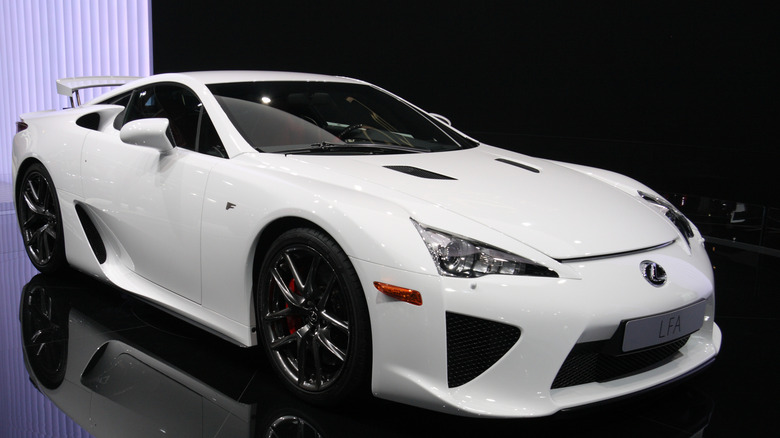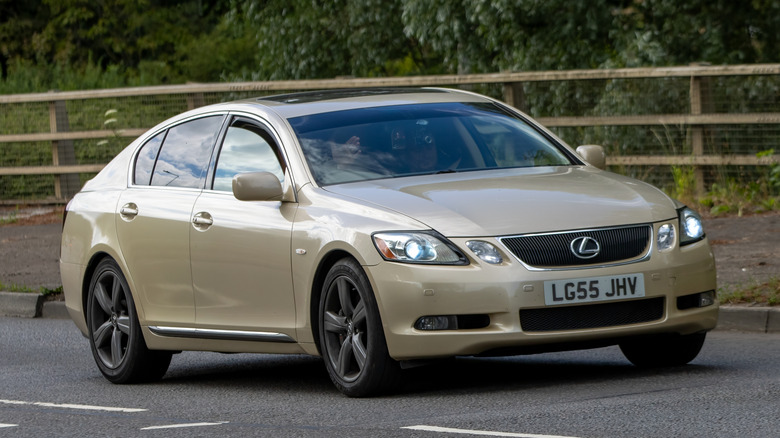The 10 Best And Worst Engines Made By Major Automakers
The beating heart of a car is its engine. The transmission, brakes, steering rack, and everything else in a car rely on the engine to put the car in motion so they can have purpose. We've all heard enthusiasts talk about the soul of a car, and a lot of that soul lives in the metal walls of the engine. It's up to the carmaker to decide if it wants to pursue an economical four-cylinder, a sporty straight-six, or a shrieking V12.
Every time an engineer's pencil hits the paper there's a chance for greatness and a chance for failure. For decades the world's biggest automakers have been cranking out engines that occupy all points of that range, and most companies have their fair share of each. Whether they end up with a masterpiece or a dud, both are guaranteed to be noticed. Here are 10 of the best and worst engines made by major automakers.
Best Toyota engine: UZ series V8s
Toyota certainly knows its way around an engine block, and that knowledge paid off when it introduced the UZ series V8 in 1989. There are two main UZ V8s — the 1UZ-FE and the 2UZ-FE — and while they are quite similar in many ways, they do have some important differences.
The 1UZ-FE was originally introduced in the 1989 Lexus LS400, offers 4.0 liters of displacement, and featured a belt-driven quad camshaft design. The initial versions of this engine pushed out a respectable 256 horsepower. Later variants of the 1UZ-FE produced after 1997 featured Toyota's variable valve timing with intelligence (VVT-i) system, which adjusts the timing for the exhaust and intake valves. This update resulted in an increase to 290 horsepower and opened the door for a successor.
The 2UZ-FE, however, essentially took everything good from its predecessor and then did it better. Its engine block was changed from aluminum to cast iron, the displacement was increased to 4.7 liters, and it could easily be fitted with a supercharger kit straight from Toyota for owners who craved more power. These improvements helped make the 2UZ-FE one of the most reliable Toyota engines ever built. In fact, one owner even drove his 2UZ-FE-powered 2007 Tundra over 1,000,000 miles while keeping it running with only regular maintenance. The feat was so impressive that Toyota dismantled the engine to study it.
Worst Toyota engine: 3VZ-E 3.0 Liter V6
Toyota is known for reliability thanks to workhorses like the UZ V8s, but not everything can hit the bullseye. The 3VZ-E V6, first introduced in 1988, is one such notable miss. It eventually found its way into some off-road models such as the T100 and the 4Runner, but it never became the rugged power plant these cars needed.
Part of the issue with these engines was a low horsepower output. The 3VZ-E V6s had a relatively large displacement of 3.0 liters, but it only put out about 150 horsepower. Even worse for an engine ostensibly intended to push SUVs and trucks through dirt, sand, and mud, the 3VZ-E could only conjure up 180 lb-ft of torque, making it a lackluster addition to these vehicles.
The engine also suffered from poor reliability. Most of these issues stemmed from bad heat management in multiple systems and areas. The coolant fan and circulation system underperformed, which left some areas of the engine hotter than others and caused accelerated heat wear on components such as the head gaskets. The timing belt was also weak, and needed to be replaced every 60,000 miles to prevent snapping. All of these factors came together to make the 3VZ-E V6 one of the worst Toyota engines ever made.
Best Mercedes engine: M297 AMG 6.9-liter and the 7.3-liter V12
As one of the big three German automakers, Mercedes can build everything from commercial cars to race cars. One of their best engines, the M297 V12, was first built in 1997 in close collaboration with AMG, Mercedes' performance division. A descendent of the brand's prior generation V12, the M120, this German powerhouse offered a whopping 6.9 liters of displacement and powered the legendary CLK GTR, where it cranked out 600 horsepower and 572 lb-ft of torque.
However, the M297 didn't stop at the CLK GTR. It became not only one of the greatest Mercedes AMG engines ever made for a German car, but one of the best ever dropped in an Italian car, also. The engine was so impressive that Horacio Pagani reached out to the AMG team, hoping that a version of the M297 could power his new lightweight supercar, the Pagani Zonda. AMG obliged, and in 2001 a 7.3-liter version was fitted to the Zonda, with later variants receiving upgraded power tunes. When a company like Pagani decides to put your engine in one of their creations, you know you've done something right.
Worst Mercedes engine: M139
The engineers at AMG are always chasing speed with a relentless hunger, but that pursuit of performance can sometimes lead them astray. The fifth generation Mercedes AMG C63 and its new engine, the M139, are one such instance. When the W206 C63 was released in 2022, it was received by fans with a healthy degree of skepticism as its brutish and burbling V8 had lost half its cylinders and gained a set of batteries in their place.
Since the M139 is so new, it's hard to gauge how long-term reliability will be, but given the M139's complexities, it's not hard to imagine problems arising in the future. In the 2025 Mercedes-AMG C63 the engine pumps out 671 horsepower thanks to its hybrid assistance and turbocharger, but it's no easy task to get these systems to work together. Even if it does, it still won't solve the main problem many enthusiasts have with it — the fact that this engine is simply not a V8.
While at this point it may be a perfectly capable engine, the M139 is a massive departure technically and spiritually from the previous generation C63. Luckily though for fans of AMG's German muscle, Mercedes will be reintroducing V8s for 2026 C and E class models.
Best Chevrolet engine: Small Block V8
Jumping across the Atlantic from Germany to America, at least one brand knows how to make a proper V8. Chevrolet is almost synonymous with American muscle, and the small block V8 is their ode to eight cylinders. First introduced in 1955 to power the Corvette, the small block V8 would go on to become one of Chevrolet's most well known and well liked creations. With versions of it still being developed today, it's a long-standing piece of American automotive engineering whose versatility cannot be overstated.
The small block V8 is one of the most reliable General Motors Engines ever made thanks to their relative simplicity. With early versions made of cast iron, and later versions built of aluminum, these engines are sturdy and easy to work on, which also makes them great crate engines for project cars. The small block V8s have been fitted from everything from muscle cars to SUVs to trucks, and somehow, despite the vast difference in character and capability required by these different vehicles, the small block V8 seems to be able to do it all.
Worst Chevrolet engine: Vega 2.3-liter Four Cylinder
In 1970, Chevrolet released a sporty and compact two-door called the Vega. Powering this little car was a 2.3-liter four cylinder — an engine that couldn't have been more different from a small block V8 if it tried. It produced 110 horsepower, which wasn't too bad for a four cylinder of that time, but the true problems with this powerplant were revealed by its reliability issues.
Ed Cole, the president of General motors at the time, wanted to make a car that could compete with the Volkswagen Beetle and the Ford Pinto, with a low production cost and desirable amenities for customers. This was a tall order, and Cole wanted it done within two years. This put a lot of pressure on Chevrolet's engineers, and the results reflected their struggles.
The inside of the Vega's engine cylinders were coated with silicon, which would erode over time causing damage to the pistons. The cooling and oil systems were also poorly constructed and sealed, which led to leaks of both fluids. With no coolant to keep heat down, and no oil to prevent friction of the engine's parts, the Vega engine was prone to overheating and subsequent engine damage.
All around, the engine lacked the attention to detail during design and construction that could've saved its reputation because of the rushed production. All this meant the Vega — along with a myriad of other production missteps that resulted in several substantial recalls — would become known as one of the worst cars ever made.
Best Ferrari engine: F136 V8
Ferrari is known for a lot of things, including its evocative designs, rich motorsport history, and an enduring affinity for drama over practicality. Its mastery of engine building, however, is what has truly solidified their reputation as one of the most respected automakers in the world. One of its most impressive powerplants is the F136 V8.
The F136 was a naturally aspirated V8 with dual overhead cams and a 90 degree V angle. First appearing in the 2002 Maserati Coupe, the F136 initially made 390 horsepower but later versions quickly improved upon that. In 2004, a variant of the F136 powered the F430 offered 4.3-liters of displacement and produced 483 horsepower. Then, in 2009, Ferrari refreshed the F136 to place in the 458 Italia with displacement pumped up to 4.5-liters and power increased to 562 horsepower. However, power figures are only half of what make Ferrari's F136 engine family so special — the other half is their rarity.
The F136 was also the last naturally aspirated V8 fitted to a Ferrari 458. Its descendants have all been muffled by turbochargers and lack the spirit of these non-aspirated V8s, whose smooth power band appeals to drivers who want a good lap time and operatic redline speaks to drivers looking for goosebumps.
Worst Ferrari engine: F106 C 000
The F136 was the result of years and years of tweaks and improvements on the brand's V8s. In order to get there, however, Ferrari had to fall short a few times. One such time was with the F106 C 000 V8. In the '70s, Ferrari wanted to design a car meant for the Italian market. The result of that was the Dino 208 GT4 and its 2-liter V8 engine.
At the time, the Italian government was taxing automakers on any engine exceeding 3.0-liters in capacity, and Ferrari had to remain at or under the 3.0-liter mark. The F106 C 000 revved to 7,700 RPM, and produced an underwhelming 170 horses. When the F106 C 000 powered Dino 208 GT4 came out in 1975, customers were not impressed with its lacking performance, or its looks.
Nowadays, most of what remains in the memories of Ferrari purists about the Dino 208 GT4 and its engine is negative. In fact, SlashGear once polled its readers on the worst Ferrari model ever, and the Dino 208 GT4 received the majority of the vote. When a brand with as many accolades as Ferrari underdelivers, people remember.
Best Lexus engine: 1LR-GUE V10
The story of the 1LR-GUE is impossible to tell without mentioning the Lexus LFA. The brainchild of Lexus chief engineer Haruhiko Tanahashi, the LFA and its engine took an entire decade to develop. During this time, the LFA experienced several setbacks and redesigns. At one point, Tanahashi and his team scrapped the entire construction to switch the body material from aluminum to carbon fiber for high rigidity and a lighter weight. However, the team's dedication paid off, as even Jeremy Clarkson called the LFA the best car he's ever driven.
That high praise comes from a lot of things, but the LFA's defining characteristic is its 4.8 liter V10 1LR-GUE engine. Developed specifically for the LFA, the marriage between this car and its engine is like no other. The engine revs to 9,000 RPM and the engineers designed the cabin not just with ergonomics in mind, but acoustics as well. Combine the 1LR-GUE's bespoke song with a limited production run of just 500 units, and we can start to see why the Lexus LFA is so expensive.
With 553 horsepower and 354 lb-ft of torque, the 1LR-GUE was no slouch. In 2011, an LFA fitted with an optional but street legal performance package posted a 7:14.64 time at Nürburgring, marking the fastest lap ever recorded by a production car at the time.
Worst Lexus engine: 3GR-FSE
During the long development and production of their best engine, Lexus also released their worst engine — the 3GR-FSE.
This engine block, which was first introduced in 2005, was made of cast aluminum and featured forged steel crankshafts alongside cast iron double overhead camshafts. It put out a decent 252 horsepower and 228 lb-ft of torque, which meant this 3.0-liter V6 was just about as normal as an engine could get. Of course, since it powered normal cars like the GS300 and the IS250, can you knock it for that? This engine's lack of character wasn't the issue, however, but its fuel pressure sensor certainly was.
Due to some shoddy assembly from the factory, the 3GR-FSE was known to have a faulty fuel pressure sensor. The gasket seal was next to the fuel pressure sensor, and as a proxy issue could cause degradation to the fuel pipe as a result of the fuel pressure sensor's poor construction. This allowed for a potential fuel leak, which could lead to sudden engine fires which was dangerous enough for Lexus to issue a recall campaign for 8,313 Lexus models featuring the 3GR-FSE.
